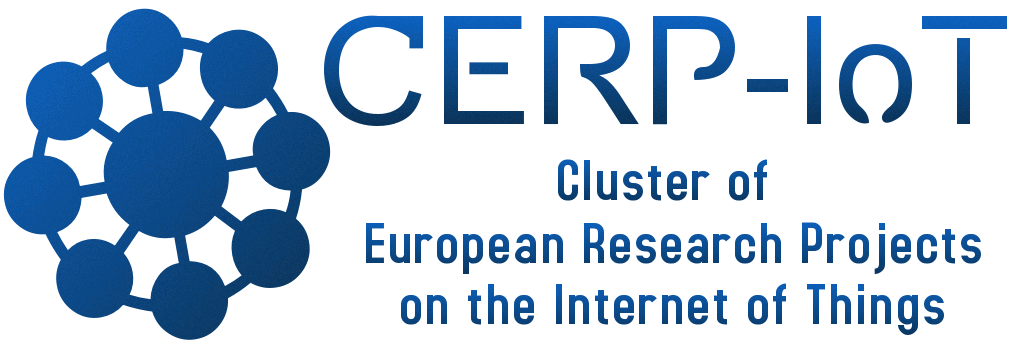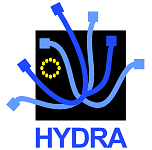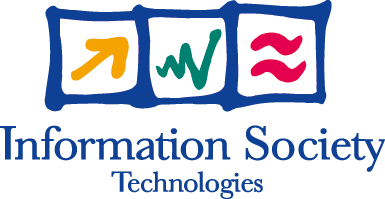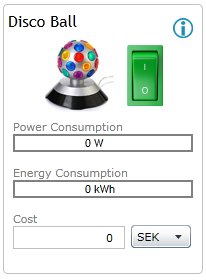- 24 Sep 2007
- Project information
- 7513 Reads
Scientific and technological objectives
The objectives of the HYDRA project are to research, develop and validate technologies and tools for building applications for networked embedded systems supporting ambient intelligence in a trusted and secure way.The objectives of work to be performed thus consist of the following individual parts:
- Development of a middleware based on a Service-oriented Architecture, to which the underlying communication layer is transparent, and consisting of:
- Support for distributed as well as centralised ambient intelligent architectures
- Support for reflective properties of components of the middleware
- Support for security and trust enabling components
- A generic semantic model-based architecture supporting model-driven development of applications
- A toolkit (SDK) that will allow developers to develop applications on the middleware.
- A business modelling framework for analysing the business sustainability of the developed applications.
- Validation of the middleware, toolkit and business models in real end-user scenarios in three user domains:
- Facility management, smart homes
- Healthcare
- Third user domain (not yet defined)
The project results consist of the following end products:
- HYDRA middleware for networked embedded systems - Adds AmI applications to new and existing embedded systems and components
- HYDRA Software Development Kit (SDK) for middleware - Allows developers to rapidly create new networked embedded AmI applications
The middleware will support cost-effective and innovative embedded systems applications for new and already existing devices, which operate with limited resources in terms of computer power, energy and memory usage.
The Software Development Kit (SDK) will allow developers to develop the innovative software applications with embedded ambient intelligence computing using the middleware
An open source reference implementation will demonstrate the applicability and quality characteristics of the HYDRA middleware. The project will carry out foundational and component research and development as well as application and system integration within the following research areas
- Embedded and mobile Service-oriented Architectures for ubiquitous networked devices
- Semantic Model-Driven Architecture for Ambient Intelligence implementation
- Ambient Intelligence support
- Hybrid architectures for Grid enabled networked embedded systems
- Wireless devices and networks with self-* properties (self-configuring, self-healing, etc.)
- Distributed social trust and behaviour as well as security and privacy
- Business innovation
Every device, sensor, actuator using HYDRA middleware should be able to be considered as a unique service. Support for dynamic reconfiguration of e.g. devices will be included for selfconfiguration of AmI applications.
The HYDRA research and development challenges and objectives are:
- To address very small devices in terms of energy and computing power (scalability)
- To mask large differences in device resources and capabilities (heterogeneity)
- To handle intermittent connectivity (availability)
- To handle decentralized knowledge bases with no access to static server(s)
- To eliminate the need for pre-defined and persistent network topology
- To handle frequently changing network access by the user
The HYDRA middleware will have provision for creating AmI services and systems through a model-driven, semantic approach. The HYDRA middleware will integrate semantic web services with the device level and thus open up for interoperability of such systems. The HYDRA research and development challenges and objectives are:
- To define and engineer a uniform, open modelling language
- To define an open type of semantics and describe its function
- To make MDA operational in a distributed and possibly ad hoc world
- To provide tools for automatic ontology construction and discovery
- To combine distributed information fractions to obtain a complete view
- To develop searchable libraries of models for different domains and devices
- To enable communication between devices that leave the network unpredictable
The HYDRA middleware will apply relevant principles and methodologies from autonomic computing and apply them to decentralised network embedded systems. An essential problem in AmI is failure both transient and permanent. There will be provision for monitoring systems, discovering failures, reasoning about failures, and reacting to failures within the HYDRA middleware. Due to the flexibility of the domain models future extensions into e.g. perception and cognition may be facilitated.
The HYDRA research and development challenges and objectives are:
- To develop architectural monitoring in heterogeneous, distributed, mobile systems
- To investigate relevant parts of autonomic computing in an AmI embedded context
- To include capabilities for perception and control in the ambient intelligence world
- To incorporate self-healing, self-configuration, self-adaptation, etc. properties
- To enable self-adaptation of available information sources to the current context
- To explore the limits of centralised and decentralised architectures in this context
Centralised architectures are not sufficient to fully support AmI embedded systems, neither are fully distributed architectures. Rather, hybrid architectures and adaptation to different types of architectures should be supported. The HYDRA middleware will thus be operational on both centralised and decentralised networks. The HYDRA research and development challenges and objectives are:
- To create and support a peer-to-peer/ad hoc architecture
- To operate on both centralised and decentralised networks
- To support adaptation of services and systems to different architecture models
Middleware for wireless objects should be able to hide the complexity of the underlying infrastructure while providing open interfaces to third parties for application development and ease of use for end-users. In HYDRA, the communication layer is not part of the middleware, which is transparent to it. The HYDRA research challenges and objectives are:
- To provide dynamic resource discovery and management
- To provide tools for advanced control making the solutions reactive to the physical world
- To incorporate semantics, which would allow object definition and querying for data
- To incorporate resources without any need for unique identifiers
- To provide unique network adapters in order to avoid specific networking technology
The HYDRA project will explore available network technologies in changing user-environments and discover available, location based information resources.
Trust and securityIn order to solve the rapidly growing challenges of privacy, identity theft and trust, the HYDRA research objectives aims at two approaches in tandem:
The first approach targets the secure design and prototyping of mobile ID management for context-aware services relying on heterogeneous mobile and wireless service and networks. Security goals such as confidentiality, authenticity, and non-repudiation will be addressed by the particularly trustworthy design and implementation of open-source-based personalised agents semantically cooperating by topic-map enabled knowledge representation and ontologies.
The second approach reflects a coherent no-trust context-locked separation through virtualisation of devices and people.
HYDRA will thus refine a security and trust model that was elaborated in the IST PRIME project. Multiple different virtualisation models with different security models will be assumed and mapping of interfaces will be carried out and considered in the overall architectural model. The model will specifically incorporate RFID with built-in access control and context-specific keys, virtual person ID and communication channel virtualisation.
The HYDRA research and development challenges and objectives are:
- Secure design and prototyping of mobile ID management for context-aware services
- Design of personalised agents for confidentiality, authenticity, and non-repudiation
- Implement virtualisation of devices and people
An integral objective of the HYDRA project is the analysis and development of realistic business model for developers and service providers. New research into defining and measuring value creation in dynamic constellations will be undertaken, leading to innovative business structures involving content providers and service providers in collaborative systems.
Specific emphasis will be made on identifying new business opportunities for SME’s. In particular SME’s with few products and limited resources find it difficult and expensive to embed ubiquitous intelligence in their products, because they need to communicate via e.g. GSM and Internet. HYDRA will benefit SME’s because it will provide an open, secure, affordable and accessible framework for communication to their products and delivery of new, innovative services, including easy and open interaction with other manufacturers’ products.
HYDRA will adopt an ontological perspective on the exploration of innovative service concepts and for quantifying value creation in complex products and value nets. The chosen approach is called e3value, and is on the one hand based on the analysis of economic value creation, distribution, and consumption in a multi-actor network and on the other hand on requirements engineering and underlying conceptual modelling techniques. The HYDRA research and development challenges and objectives are:
- To define and identify value creation
- To model dynamic value constellations
- To identify sustainable business models in selected user domains
- To investigate the possible use of the HYDRA middleware for SME’s





 The Hydra project is co-funded by the
The Hydra project is co-funded by the 


